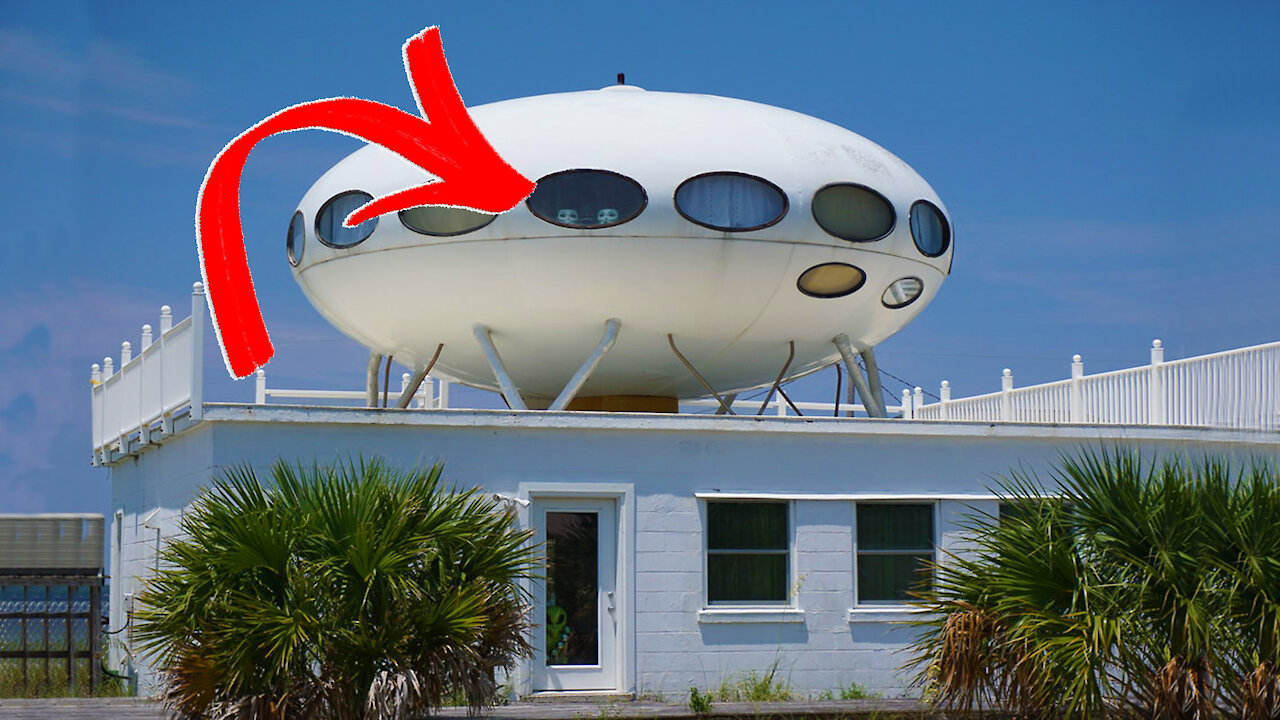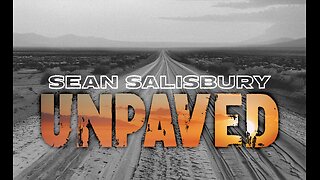Premium Only Content

Sleeping in a UFO
Have you ever thought about spending the night in a UFO … house?
There I was, driving through Pensacola Florida on a rainy afternoon, when suddenly, I spotted a UFO! Of course, I HAD to do a U-turn to investigate. The video I took is a little rough as I was shooting one-handed out the passenger window while driving a rental car ;)
After I shot this video, I looked on the internet to get some information on exactly what I had just seen. It turns out, what I was looking at is called a “Futuro House”, and this particular one has withstood many hurricanes—just as the experimental 1960s design intended.
This portable space age structure, dubbed “The UFO House” on Google Earth, was originally conceived as a ski cabin. The experimental design was hyped as the home of the future, but less than 100 were ever built, and around 60 still remain scattered across the globe. This Futuro now houses the Pensacola Beach Preservation and Historical Society Headquarters.
I found out that this house is privately owned but few people ever stay there. There are no fences or private property signs telling you not to trespass, except on the ramp leading up to the UFO door.
Hurricane Ivan, Hurricane Dennis, a tornado -- the UFO House weathered them all. All Florida homes should be built like spaceships! The portable, fiberglass, prefabricated home design from 1968 is by Finnish architect Matti Suuronen.
It had a single bedroom, bathroom, U-shaped kitchen area, separate dining area, a curved 23-ft. couch and a central fireplace that doubled as a grill.
They were made in sections that could be delivered by truck and assembled on-site, or, for the really wealthy, they could be completely assembled at the factory and flown in by helicopter. They had four metal pads at the end of V-shaped legs that were meant to be bolted to concrete footings, and all utilities ran through a column, called a "utility pod," immediately below the house.
“Spaceship House” is also a name commonly given to the structure at 1304 Panferio Drive in Pensacola Beach. The shape, reminiscent of a flying saucer, and the structure's airplane hatch entrance have made these houses sought after by collectors. A Futuro house (or pod) measures 13 feet (4 meters) high and 26 feet (8 meters) in diameter.
The Futuro house was a product of post-war Finland, reflecting the period's faith in technology, the conquering of space, unprecedented economic growth, and an increase in leisure time. It was designed by Suuronen as a ski cabin that would be "quick to heat and easy to construct in rough terrain". The end result was a universally transportable home that had the ability to be mass replicated and situated in almost any environment.
To facilitate transport, the house consisted of 16 elements that were bolted together to form the floor and the roof. The project could be constructed on-site, or dismantled and reassembled on-site in two days, or even airlifted in one piece by helicopter to the site. The only necessity on site for its placement were four concrete piers, so the project could occupy nearly any topography. Due to the integrated polyurethane insulation and electric heating system, the house could be heated to a comfortable temperature in only thirty minutes.
By the mid-1970s, the house was taken off the market. From the beginning, it had been met with public hostility. Its avant-garde appearance and unfamiliar material influenced the public’s reluctance to accept the Futuro House.
The first Futuro House that was erected in Finland elicited public protest because it looked too unnatural for the rustic environment. In the United States, Futuro Houses were banned from many municipalities by zoning regulations. Banks were reluctant to finance them. Some were vandalised. Some customers who committed to buy them backed out and forfeited their non-refundable $1,000 deposits. Some have been destroyed.
-
 0:21
0:21
AmplifiedLIFE
1 year ago $0.01 earnedThe Waters Above and Below
58 -
 LIVE
LIVE
The Quartering
58 minutes agoTrump Can't Read? Terror In Colorado, Tomi Lahren Bashes Men, Tinder Bans Short Men?
11,116 watching -
 LIVE
LIVE
Tucker Carlson
28 minutes agoBishop Barron on the New Pope, the Foolishness of Atheism, and Why Young Men Are Turning to Christ
4,420 watching -
 LIVE
LIVE
Dr Disrespect
1 hour ago🔴LIVE - DR DISRESPECT - WARZONE - STACHE OPS RANKED
3,288 watching -
 LIVE
LIVE
Sean Unpaved
1 hour agoFinals Fever, Softball Rules, Giannis's Next Move, & Digg's Boat Buzz
971 watching -
 LIVE
LIVE
Simply Bitcoin
2 hours ago$2.3T Bank Sends HUGE Bitcoin Warning To This $300T Market | EP 1257
343 watching -
 LIVE
LIVE
BitLab Academy
3 hours agoPowell speaks! Crypto Trap Alert! Bitcoin & Altcoin Mega Bull Loading!
104 watching -
 1:03:51
1:03:51
Timcast
1 hour agoFEDS RAID Democrat Office For AIDING Rioters Staff DETAINED By ICE
34.9K36 -
 LIVE
LIVE
Rebel News
45 minutes agoNearly 1M newcomers so far in 2025, Terror in the US, Carney meeting premiers | Rebel Roundup
381 watching -
 LIVE
LIVE
The Tom Renz Show
51 minutes agoCelebrating the Brilliance of Pride Month & Their Support of a Free Palestine
81 watching